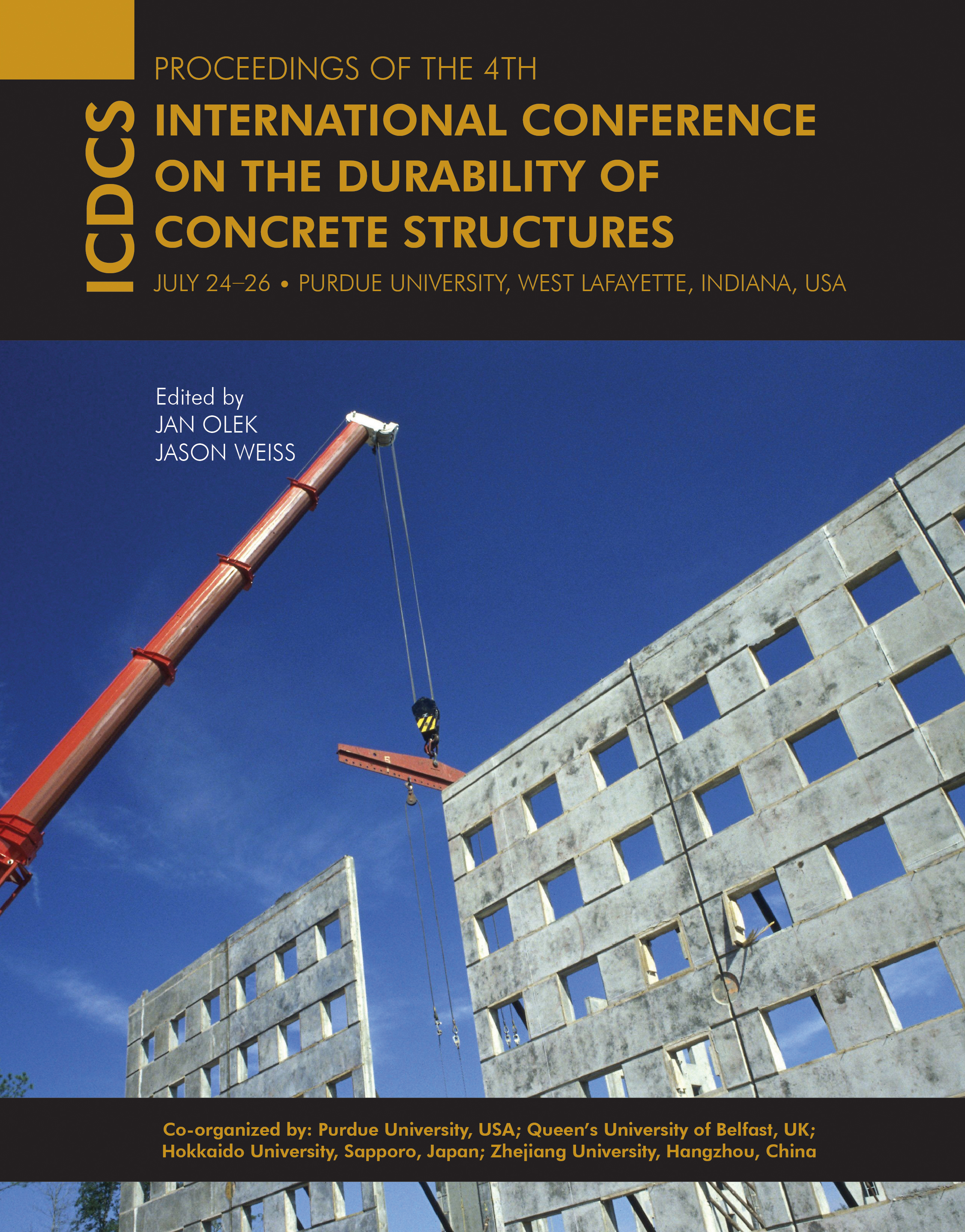Abstract
Air entrainment is commonly used to improve the durability of concrete materials exposed to freezing and thawing. While the influence of air voids on freeze/thaw damage and salt scaling is frequently studied, the influence of entrained air voids on ionic transport has been studied less frequently. Since ionic transport in concrete materials relies on pore fluid as the medium of conduction, only saturated or partially saturated air voids participate in the transport processes. This paper discusses the conditions under which air voids could become saturated. Specifically, the saturation condition of entrained air voids in laboratory tests and in service is discussed. This paper compares the results of steady and non-steady state migration tests on concrete specimens when air voids are saturated and when air voids are primarily empty. The implications of the observed difference are discussed to provide a better understanding of the direct application of laboratory test results to predict the service life of concrete materials in the field. The saturation of air voids is observed to also influence the electrical resistivity of concrete materials.
Date of Version
July 2014
DOI
10.5703/1288284315400
Recommended Citation
Bu, Yiwen and Weiss, Jason, "Saturation of Air Entrained Voids and Its Implication on the Transport of Ionic Species in Concrete" (2014). International Conference on Durability of Concrete Structures. 4.
https://docs.lib.purdue.edu/icdcs/2014/transportproperties/4
Included in
Saturation of Air Entrained Voids and Its Implication on the Transport of Ionic Species in Concrete
Air entrainment is commonly used to improve the durability of concrete materials exposed to freezing and thawing. While the influence of air voids on freeze/thaw damage and salt scaling is frequently studied, the influence of entrained air voids on ionic transport has been studied less frequently. Since ionic transport in concrete materials relies on pore fluid as the medium of conduction, only saturated or partially saturated air voids participate in the transport processes. This paper discusses the conditions under which air voids could become saturated. Specifically, the saturation condition of entrained air voids in laboratory tests and in service is discussed. This paper compares the results of steady and non-steady state migration tests on concrete specimens when air voids are saturated and when air voids are primarily empty. The implications of the observed difference are discussed to provide a better understanding of the direct application of laboratory test results to predict the service life of concrete materials in the field. The saturation of air voids is observed to also influence the electrical resistivity of concrete materials.





